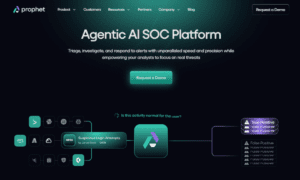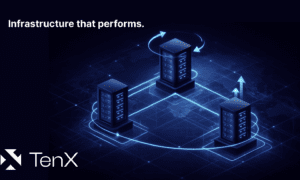Expert Analysis and User Insights on XLC.com Hosting
XLC.com delivers high-performance dedicated server with enterprise-grade Dell and Supermicro hardware. Powered by AMD EPYC™ and Intel® Xeon® CPUs, they offer no-contract plans, unmetered 1Gbps–100Gbps bandwidth, and strong DDoS protection. Ideal for gaming, fintech, eCommerce, and video steaming, XLC ensures fast deployment and reliable global connectivity and is optimized for Asia traffic.
XLC Features
- AMD EPYC™ & Intel® Xeon® processors
- Dell & Supermicro server hardware
- NVMe Gen 4 SSD drives & ECC RAM
- Unmetered 1 to 100Gbps bandwidth
- 1-hour delivery
- Customizable server configuration
What makes XLC.com stand out is its focus on raw performance through dedicated bare metal servers—no virtualization, no noise, just power. Built on enterprise-grade Dell and Supermicro hardware, and running on AMD EPYC™ or Intel® Xeon® CPUs, these servers are optimized with ECC memory and NVMe storage for maximum reliability and speed.
Whether you’re looking for high-performance infrastructure for gaming, fintech, or eCommerce, XLC.com’s Los Angeles dedicated server solutions deliver enterprise-level power where it matters most. Enjoy powerful flexibility with instant configurations, 1-hour standard delivery, and unmetered bandwidth from 1 to 100Gbps. The server configuration tool lets you fully customize your server to exact specs—no long-term contracts required. Plus, with a 2-hour hardware replacement SLA, you get the uptime and reliability your business demands.
Performance Highlights
Choosing the right hosting provider comes down to more than just price or support—it’s about how well your infrastructure performs under pressure. That’s where XLC’s bare metal environment excels.
Their servers are built for throughput and responsiveness, offering unshared bandwidth starting from 1Gbps and scaling up to an impressive 100Gbps. This ensures smooth data transfers even during peak loads.
Low latency and high transfer rates are backed by a no-packet-loss promise. This means every data packet reaches its destination reliably, a critical factor for latency-sensitive applications.
XLC’s systems are engineered with the latest generation of Dell and Supermicro hardware. Alongside that, ECC RAM and NVMe drives contribute to both speed and data integrity.
Another major strength is resiliency. XLC enforces a strict 2-hour hardware replacement SLA, minimizing downtime. This is supported by around-the-clock, on-site staff for rapid response.
Combined with advanced routing through Juniper and Cisco gear, this infrastructure is designed for peak performance. It’s ideal for users who can’t afford lag or service interruptions.
XLC Performance Review (Real-World Testing)
CPU & Memory Benchmarks
To evaluate the raw compute power of XLC’s bare metal server, we conducted a full PassMark PerformanceTest. The results were exceptional—delivering a CPU Mark score of 84,392, placing it firmly in the 99th percentile globally. This performance underscores the capabilities of the AMD EPYC™ 7713/7C13, a 64-core, 128-thread powerhouse (per CPU) engineered for extreme multitasking. It’s ideally suited for high-concurrency applications, intensive data pipelines, and virtualization-heavy workloads where consistent multithreaded throughput is critical.
The overall PassMark rating of 10,817 reflects robust system-wide performance. Coupled with a Disk Mark score of 29,968 (80th percentile), this confirms that the hardware has been fine-tuned for enterprise-grade production readiness. Whether you’re running high-throughput APIs, large-scale simulations, or multi-threaded backend systems, this level of CPU throughput ensures rapid execution and consistently low latency under demanding conditions.
Looking deeper into the compute breakdown, the system delivered 962,077 in Integer Math, 543,540 in Floating Point Math, and a staggering 2,986,947 in Compression—all of which are critical for data-intensive applications. Whether it’s encoding, high-performance computing, or real-time analytics, these figures highlight the raw, parallelized processing muscle of this dual EPYC configuration. It’s a clear indicator that this platform is built for modern, compute-heavy workloads at scale.
Disk Speed
One of the standout highlights from our test was the Disk Mark score of 29,968, placing it in the 80th percentile. This remains consistent with XLC’s use of enterprise-grade NVMe Gen 4 SSDs across its fleet. Such high-speed storage is crucial for I/O-heavy workloads like video processing, transactional databases, and CDN caching. The fast read/write operations help eliminate bottlenecks, improve application responsiveness, and reduce load times across the board.
Network Speed
Network performance is another area where this server truly delivers. Our Speedtest results, powered by the dual 2× AMD EPYC 7713/7C13 CPUs, showed an impressive download speed of 6554.37 Mbps and an upload speed of 2530.18 Mbps, with a remarkably low 1 ms ping—a testament to its ultra-low-latency connectivity. These figures reflect a dramatic leap in bandwidth throughput, making the system exceptionally well-suited for high-demand environments such as 4K/8K video streaming, large-scale data replication, and latency-sensitive real-time communications.
Looking Glass Result
Network performance was rigorously evaluated using Looking Glass tests conducted from three strategically chosen locations—Shanghai, Sydney, and Tokyo—targeting the server’s IP address. Each test sent 10 ICMP ping packets to ensure reliable measurement of latency and packet loss. These tests were performed on a consistent hardware baseline of dual 2× AMD EPYC 7713/7C13 CPUs, guaranteeing uniform benchmarking conditions. The results showcase excellent connectivity with zero packet loss and low latency across all tested routes, underscoring the server’s capability to handle latency-sensitive applications and cross-regional traffic efficiently.
Shanghai, China
From Shanghai, two major ISPs—Aliyun and Tencent—were tested to verify network stability and latency. Aliyun exhibited an average round-trip time (RTT) of 170.42 ms, with a best RTT of 169.92 ms and a worst RTT of 171.12 ms, accompanied by a minimal standard deviation of 0.39 ms. Tencent performed similarly, with an average RTT of 147.73 ms, best RTT of 147.3 ms, worst RTT of 148.08 ms, and an even lower standard deviation of 0.23 ms. Both ISPs reported 0% packet loss across all 10 packets, indicating robust and reliable connectivity suitable for enterprise-grade workloads within Greater China.
Sydney, Australia
The Sydney Looking Glass test, conducted via Vultr, demonstrated excellent performance with an average RTT of 141.01 ms, ranging from 140.48 ms to 141.5 ms. The test recorded a standard deviation of just 0.38 ms, highlighting a highly stable and consistent connection. No packet loss was observed in all 10 ping packets, confirming the route’s reliability for traffic across the South Pacific region.
Tokyo, Japan
Tokyo delivered the lowest latency among the three locations, tested across two ISPs—DODO and Vultr. DODO’s average RTT was 114.02 ms, with a best of 113.65 ms and worst of 114.82 ms, paired with a 0.38 ms standard deviation. Vultr posted an even lower average RTT of 99.04 ms, ranging from 98.54 ms to 99.83 ms, and a slightly higher standard deviation of 0.4 ms. Both ISPs maintained flawless packet delivery with 0% loss across all 10 packets, making Tokyo an ideal node for latency-critical applications such as gaming, VoIP, and video streaming in East Asia.
Final Thoughts on Performance
With a top-tier CPU, excellent disk performance, and stable memory throughput, XLC’s servers are clearly optimized for real-world, production-grade performance. These results show that XLC can handle compute-heavy operations, high-speed storage demands, and day-to-day stability without compromise. Combined with ultra-low latency network connectivity, whether you’re a developer deploying at scale or a business running mission-critical workloads, XLC’s performance benchmarks speak for themselves.
Data Center Locations & Network
Los Angeles Data Centers
Located in Downtown LA, XLC leverages two of the most connected data centers in the West Coast—Digital Realty LAX10 and CoreSite LA1. Both facilities are engineered for continuous uptime with N+1 power and cooling redundancy and 24/7 on-site personnel.
These data centers not only meet strict compliance standards like SOC 2, ISO 27001, and HIPAA, but also offer seismic-grade infrastructure in Zone 4, ensuring full operational integrity even in extreme conditions.
Global Connectivity
XLC’s Los Angeles data centers are strategically positioned to deliver exceptional global connectivity, especially to the Asia-Pacific region. With direct routes to China, Japan, and Australia, latency is significantly reduced, ensuring faster content delivery and smoother user experiences.
The integration of Tier 1 transit providers—such as Lumen, PCCW, NTT, and major Chinese carriers—supports high-speed, reliable networking. Backed by premium BGP routing and robust DDoS protection, these facilities are built to handle high-demand workloads with enterprise-grade performance and uptime guarantees.
Use Cases – Who Should Choose XLC?
Gaming Solutions
When selecting a hosting solution for gaming, server performance is crucial. Lag, high ping, or packet loss can ruin the player experience and drive users away. XLC’s infrastructure avoids these issues by combining cutting-edge hardware with ultra-low latency and robust DDoS protection.
eCommerce Hosting
When running an online store, speed and security are critical. XLC’s eCommerce hosting solution is built on ultra-fast NVMe SSD storage and enterprise-grade hardware, ensuring minimal load times even during high traffic surges. The infrastructure is PCI-DSS compliant, meaning your customers’ payment data is handled securely and in line with industry standards.
Whether your store manages thousands of SKUs or sees spikes in user activity, XLC’s dedicated servers are optimized for performance, privacy, and reliability—so you can focus on growing your business without worrying about downtime or data breaches.
Fintech & Financial Applications
Fintech platforms rely on more than just fast speeds—they need secure, stable environments to handle sensitive data and real-time transactions. XLC delivers this with certified Tier 3 data centers, low-latency networks, and high-availability servers built to meet strict compliance standards.
Video Streaming Platforms
A powerful infrastructure is essential for modern video streaming platforms, and XLC delivers just that. Getting started is simple—just configure your server and request a free trial. With 100Gbps bandwidth, ultra-fast NVMe storage, and support for high concurrency, your platform is ready to scale globally without performance hiccups.
Ease of Use & Server Deployment
Quick Setup Process
Getting started with XLC’s servers is incredibly straightforward. You can configure a dedicated server with just one click—no lengthy forms or commitment required. Whether you’re testing performance with a trial or customizing hardware for production, the process is fast, intuitive, and delivers results within an hour.
Customization & Control
XLC allows full customization of your server hardware, giving users the freedom to choose CPU, memory, and storage options tailored to their workloads. Whether you’re scaling a high-traffic application or deploying a new environment, this level of flexibility ensures you get exactly what your infrastructure needs—nothing more, nothing less.
XLC Pricing & Plans – 2025
| CPU | RAM | Storage | Bandwidth | Price |
| AMD EPYC™ 4244P (6C/12T, 3.80GHz) | 32GB DDR5-4800 ECC | 960GB NVMe Gen4 SSD | 1Gbps | $99/mo |
| AMD EPYC™ 4584PX (16C/32T, 4.20GHz) | 64GB DDR5-5600 ECC | 960GB NVMe Gen4 SSD | 1Gbps | $209/mo |
| AMD EPYC™ 7713/7C13 (64C/128T, 2.00GHz) | 128GB DDR4-3200 ECC | 2 x 1.92TB NVMe Gen4 SSD | 1Gbps | $469/mo |
| 2 x AMD EPYC™ 9754 (256C/512T, 2.30GHz) | 128GB DDR5-4800 ECC | 2 x 1.92TB NVMe Gen4 SSD | 1Gbps | $879/mo |
XLC’s pricing model is refreshingly straightforward. With clear cost breakdowns, no hidden fees, and a pay-as-you-go structure, users can plan budgets with confidence. Each configuration is transparently listed with specs and delivery times, making it easy to choose based on performance needs and cost constraints.
Support & Free Trial
24/7 Global Support
If something goes wrong, it’s reassuring to know that help is just a message away. XLC offers dependable, round-the-clock technical assistance that’s responsive and knowledgeable. Whether you’re dealing with system slowdowns or connectivity issues, their support team is always on standby.
Custom trial and free trial options for testing
Trying out XLC’s platform is straightforward thanks to their flexible onboarding options. Whether you’re exploring compatibility or simulating real workloads, both the no-cost trial and personalized test setup let you evaluate their environment risk-free before scaling operations.
Pros and Cons of Using XLC
Pros
- High-performance hardware with fast delivery
- Direct APAC connectivity and Tier 1 routing
- No long-term contracts
- 24/7 support and fast SLA
- Custom server configurations
- Unmetered 1Gbps to 100Gbps bandwidth
- DDoS protection included
- Certified data centers
- Trial options available
Cons
- Requires server management skills (no bundled panel)
- Limited locations (primarily LA, USA-focused)
- No shared hosting or VPS plans
- No managed services by default
- Minimal automation or dashboard tools
XLC is designed for users who want full control over dedicated hardware. There’s no managed panel or automation—just raw bare metal you configure yourself. Setup is quick, but technical know-how is essential from the start.
With top-tier routing to APAC and certified LA data centers, XLC delivers low-latency performance and strong uptime. It’s ideal for high-throughput environments, but not suited for users needing managed or cloud-like services.
Final Verdict — Is XLC Worth It in 2025?
If you’re looking for a hosting provider that feels built for scale and speed from the ground up, XLC is a strong contender. From the moment you dive into their server configuration options, it’s clear they prioritize power, flexibility, and real-world usability over flashy extras.
What impressed us most is how XLC balances customization with performance. Whether you need a straightforward setup or a complex, high-core-count system, their servers are designed to meet the demands of modern, resource-heavy applications—without locking you into contracts.
We also liked the delivery speed and unmetered bandwidth options, which make scaling up or testing new deployments incredibly seamless. Their support team is responsive, and the presence of a hardware replacement SLA adds peace of mind for businesses that can’t afford downtime.
In short, if you need full control over your infrastructure with enterprise-grade hardware and excellent connectivity, XLC is absolutely worth considering. It’s a solid fit for developers, startups, and enterprises that care about performance and uptime, not just pricing.



































